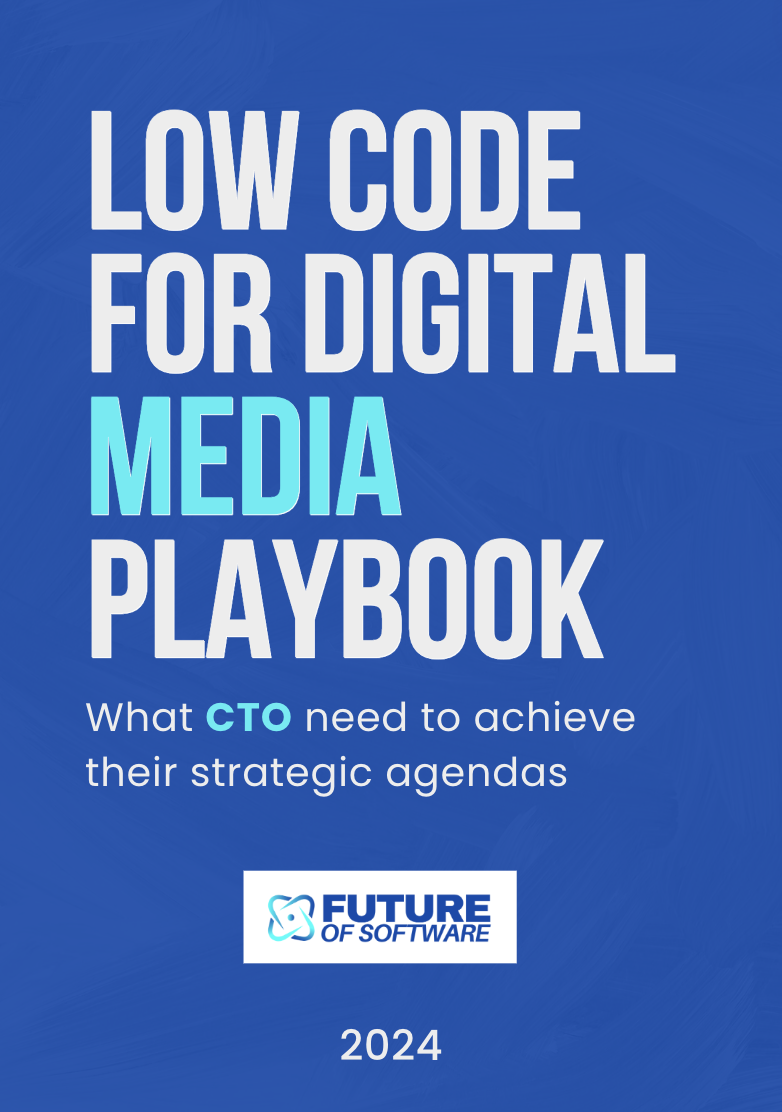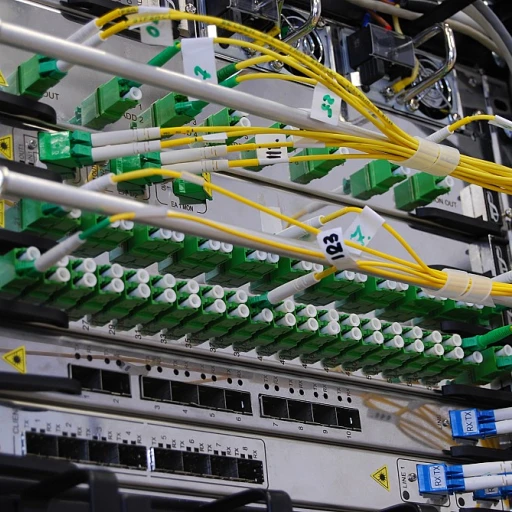
The Role of Software in Modern Supply Chains
Transforming Supply Chains with Digital Solutions
In today's fast-paced business environment, the role of software in modern supply chains is more critical than ever. As consumer demand continues to evolve, companies in the consumer packaged goods (CPG) industry are increasingly relying on digital solutions to streamline operations and maintain a competitive edge. The integration of advanced software tools into supply chain management allows for real-time data assessment, enhancing the ability of CPG companies to respond swiftly to market changes.
Enhancing Inventory Management and Logistics
Effective inventory management is crucial for CPG suppliers aiming to meet consumer expectations while minimizing costs. Software solutions provide a comprehensive view of inventory levels across various retail chains, enabling better demand forecasting and reducing the risk of overstock or stockouts. Moreover, logistics services benefit from software-driven insights, optimizing routes and improving delivery times, which is essential for direct consumer satisfaction.
Driving Business Efficiency
Software not only supports operational efficiency but also plays a pivotal role in strategic decision-making. By leveraging data analytics, CPG companies can refine their supply chain strategies, ensuring alignment with business goals and consumer needs. This digital transformation is vital for maintaining a competitive edge in the industry. For those interested in enhancing business efficiency, exploring the integration of tools like NetSuite and UPS can provide valuable insights into optimizing supply chain operations. Learn more about enhancing business efficiency with NetSuite and UPS integration.
Key Challenges in CPG Supply Chain Organization
Understanding the Complexities of CPG Supply Chains
In the ever-evolving landscape of consumer products, supply chains are the backbone that supports the seamless flow of goods from manufacturers to consumers. However, CPG companies face numerous challenges in organizing these intricate networks. The complexities arise from the need to balance demand forecasting, inventory management, and logistics, all while maintaining a competitive edge in the market.
Demand Forecasting and Inventory Management
One of the primary challenges in CPG supply chains is accurate demand forecasting. Retail companies must predict consumer demand with precision to avoid overstocking or stockouts, both of which can lead to significant financial losses. Effective inventory management is crucial, as it directly impacts the efficiency of the entire supply chain. CPG companies must leverage real-time data to make informed decisions that align with consumer demand.
Logistics and Chain Strategy
Logistics play a pivotal role in the success of CPG supply chains. The ability to transport products efficiently from suppliers to retail outlets is essential for meeting consumer expectations. CPG companies must develop robust chain strategies that optimize transportation routes and reduce delivery times. This requires a comprehensive assessment of logistics services and the integration of digital solutions to streamline operations.
Digital Transformation and Data Management
The digital transformation of supply chains is no longer optional; it is a necessity for staying competitive in the CPG industry. Companies must invest in digital tools that enhance data management and provide insights into consumer behavior. By harnessing the power of data, CPG companies can improve their supply chain solutions and drive business growth.
For a deeper dive into the complexities of the advertising services industry, which shares similar challenges with CPG supply chains, you can explore more insights here.
Emerging Software Solutions for CPG Supply Chains
Revolutionizing Supply Chain Management with Software
In the ever-evolving landscape of consumer products, companies are increasingly turning to innovative software solutions to streamline their supply chain operations. The integration of digital tools is not just a trend but a necessity for maintaining a competitive edge in the industry. As the demand for real-time data and efficient logistics grows, businesses are exploring various software options to enhance their supply chain strategies.
Advanced Inventory Management Systems
One of the most significant advancements in supply chain solutions is the development of sophisticated inventory management systems. These systems provide CPG companies with the ability to monitor stock levels in real time, reducing the risk of overstocking or stockouts. By leveraging data analytics, businesses can optimize their inventory to meet consumer demand more effectively, ensuring that products are available when and where they are needed.
Demand Forecasting and Consumer Insights
Another critical area where software is making a substantial impact is in demand forecasting. By analyzing consumer behavior and market trends, CPG suppliers can predict future demand with greater accuracy. This capability allows companies to adjust their production schedules and supply chain logistics accordingly, minimizing waste and maximizing efficiency. The integration of artificial intelligence and machine learning into these systems further enhances their predictive power, providing businesses with valuable insights into consumer preferences.
Enhancing Chain Transformation with Digital Tools
Digital transformation is at the heart of modern supply chain management. By adopting cloud-based platforms and IoT technologies, CPG companies can achieve greater transparency and collaboration across their supply chains. These tools facilitate seamless communication between different stakeholders, from suppliers to retail companies, ensuring that everyone is aligned with the overall chain strategy. This level of integration is crucial for adapting to the dynamic nature of the CPG industry.
Direct-to-Consumer Models and Real-Time Services
The shift towards direct-to-consumer models is another area where software is playing a pivotal role. By utilizing e-commerce platforms and digital marketing tools, companies can reach consumers directly, bypassing traditional retail chains. This approach not only enhances consumer engagement but also provides businesses with real-time feedback on product performance and consumer satisfaction. As a result, companies can make informed decisions about their product offerings and marketing strategies.
For more insights on how businesses are adapting to the software-driven future, explore our detailed analysis on why businesses must adapt in the software-driven future.
Assessing Software Impact on Supply Chain Performance
Evaluating Software's Role in Supply Chain Performance
In the rapidly evolving landscape of consumer products, assessing the impact of software on supply chain performance is crucial for CPG companies aiming to maintain a competitive edge. The integration of digital solutions in supply chain management has transformed how businesses operate, offering real-time insights and enhancing overall efficiency.
One of the primary benefits of software in supply chains is its ability to streamline inventory management. By leveraging advanced data analytics, companies can optimize their inventory levels, reducing excess stock and minimizing shortages. This not only improves the bottom line but also ensures that consumer demand is met promptly, enhancing customer satisfaction.
Moreover, the implementation of demand forecasting tools allows CPG suppliers to predict consumer trends more accurately. These tools utilize historical data and market analysis to provide insights into future demand, enabling businesses to adjust their production and logistics strategies accordingly. This proactive approach helps in minimizing waste and aligning supply chain strategies with market needs.
In addition to inventory and demand management, software solutions facilitate better communication and collaboration across the supply chain. By integrating various systems, CPG companies can ensure seamless data flow between suppliers, manufacturers, and retail companies. This connectivity is vital for efficient chain management, allowing for quicker response times and improved service delivery.
However, the assessment of software impact is not without challenges. Companies must consider the time and resources required for implementation and training. Additionally, the ongoing management of these digital tools requires a strategic approach to ensure they continue to deliver value. As the industry evolves, continuous evaluation and adaptation of software solutions will be necessary to maintain their effectiveness.
Ultimately, the successful integration of software in CPG supply chains can lead to significant improvements in efficiency and performance. By embracing these digital advancements, companies can not only enhance their operational capabilities but also position themselves as leaders in the CPG industry.
Case Studies: Successful Software Integration in CPG
Real-World Examples of Software Integration in CPG Supply Chains
In the competitive landscape of consumer products, leading CPG companies are leveraging digital solutions to transform their supply chains. These real-world examples highlight how strategic software integration can enhance efficiency and drive success.
Inventory Management Transformation
One of the most significant challenges in CPG supply chains is inventory management. By integrating advanced inventory management systems, companies have achieved remarkable improvements. These systems provide real-time data, enabling better demand forecasting and reducing excess inventory. As a result, CPG suppliers can respond swiftly to consumer demand, minimizing stockouts and overstock situations.
Enhancing Logistics and Distribution
Logistics and distribution are critical components of the supply chain. Some CPG companies have adopted sophisticated logistics management software that optimizes routes and delivery schedules. This not only reduces transportation costs but also ensures timely product delivery to retail companies, enhancing the overall consumer experience.
Data-Driven Decision Making
Data is at the heart of modern supply chain strategies. By implementing data analytics platforms, CPG companies can gain insights into consumer behavior and market trends. This data-driven approach allows for more informed decision-making, helping businesses to align their products supply with consumer demand effectively.
Direct-to-Consumer Models
Some CPG companies are exploring direct-to-consumer models, bypassing traditional retail chains. This shift requires robust digital platforms that manage everything from order processing to customer service. By integrating these platforms, businesses can offer personalized services and build stronger relationships with consumers.
Achieving a Competitive Edge
Ultimately, the integration of software solutions in CPG supply chains provides a competitive edge. Companies that embrace these technologies can streamline their operations, reduce costs, and enhance their chain management strategies. As the industry continues to evolve, those who invest in innovative chain solutions will likely lead the way in the CPG industry.
Future Trends in CPG Supply Chain Software
Anticipating Future Software Developments in CPG Supply Chains
The future of software in the CPG supply chain industry is poised for transformative changes, driven by technological advancements and evolving consumer demands. As CPG companies strive to maintain a competitive edge, they are increasingly turning to digital solutions to enhance their supply chain management and logistics.
Real-Time Data and Predictive Analytics
One of the most significant trends is the integration of real-time data and predictive analytics. These technologies enable CPG suppliers to make informed decisions by providing insights into consumer behavior and demand forecasting. By leveraging data, companies can optimize inventory management, reducing waste and ensuring products supply aligns with consumer demand.
Blockchain for Enhanced Transparency
Blockchain technology is gaining traction as a tool for enhancing transparency and trust within supply chains. By providing a secure and immutable record of transactions, blockchain can help CPG companies track products from production to retail, ensuring authenticity and reducing the risk of fraud. This transparency is crucial for building consumer trust and meeting regulatory requirements.
AI and Machine Learning in Supply Chain Optimization
Artificial intelligence (AI) and machine learning are becoming integral to supply chain solutions. These technologies can automate complex processes, improve demand forecasting, and enhance chain management strategies. By analyzing vast amounts of data, AI can identify patterns and suggest improvements, leading to more efficient and responsive supply chains.
Direct-to-Consumer Models
The rise of direct-to-consumer models is reshaping the CPG industry. By bypassing traditional retail chains, companies can offer personalized services and products directly to consumers. This shift requires robust digital infrastructure to manage logistics and consumer interactions effectively.
Embracing Sustainability
Sustainability is becoming a core focus for CPG companies. Software solutions that support sustainable practices, such as reducing carbon footprints and optimizing resource use, are increasingly in demand. As consumers become more environmentally conscious, CPG companies must adapt their supply chain strategies to meet these expectations.
As the CPG industry continues to evolve, the role of software in supply chain transformation will only grow. Companies that embrace these emerging technologies will be better positioned to meet consumer demands and navigate the complexities of modern supply chains.





-large-teaser.webp)








